Around 20 million people travel through the Channel Tunnel each year to make what used to be a 5- or 6-hour voyage between England and France in just 35 minutes. The Channel Tunnel is just one example of some of the underground (or underwater) infrastructure marvels that connect communities across land and under sea.
In this Remitly article, you will discover seven famous tunnels around the world and learn about some of the innovative tunnel engineering methods developed to make these ambitious infrastructure projects happen.
The Channel Tunnel (United Kingdom/France): connecting two nations
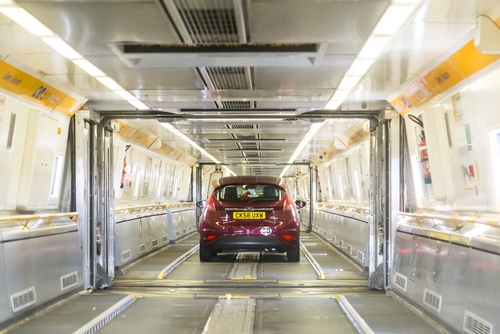
Built over a period of six years and costing £9.4 billion GBP (about $12.5 billion USD)—twice the original budget—the Channel Tunnel was completed and opened in 1994. The 31-mile underwater tunnel passes beneath the English Channel, connecting the United Kingdom (Folkestone) with mainland Europe via France (Coquelles).
When I first made the trip, I imagined driving through an underwater glass tunnel watching the sea life, but the real experience was quite different. The tunnel is cut into chalk marl beneath the seabed, so there is nothing to see—it’s like going through any other underground tunnel. It is also not actually designed for cars, but for high-speed rail lines that can carry passengers, cars, and heavy equipment.
The Channel Tunnel dramatically improved England’s connection to Europe. It used to be that traveling between London and Paris meant booking a flight or taking a combined train and ferry journey. Now, the Eurostar can get you door-to-door in 2.5 hours. The Eurostar is estimated to have carried over 150 million passengers since opening in 1994, including 19.5 million in 2024 alone. While the Channel Tunnel is great for passengers, it is equally important for goods, with an estimated 1.5 million freight trucks making the crossing each year.
Gotthard Base Tunnel (Switzerland): the world’s longest rail tunnel
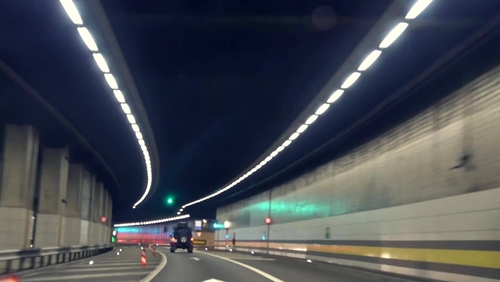
Opened in 2016, Switzerland’s Gotthard Base Tunnel is the world’s longest and deepest tunnel. The underground construction runs for 35 miles across the Swiss Alps, principally between Erstfeld and Bodio.
These two rail tunnels represent the first flat route built through a major mountain range. This meant that the subterranean passages needed to be deeply mined, with a maximum depth of over 7,500 feet—comparable to the Earth’s deepest mines. Unsurprisingly, this mammoth project took 17 years to complete.
The Gotthard Base Tunnel is an architectural marvel. Not only has it increased the amount of freight that can be moved between northern and southern Europe, but it has shifted freight transport from heavy goods vehicles to more environmentally friendly freight trains.
The project also adopted a sustainable circular approach, with one-third of excavated rock materials recycled and used in concrete production, and the rest used to fill railway tracks.
Seikan Tunnel (Japan): triumph over treacherous waters
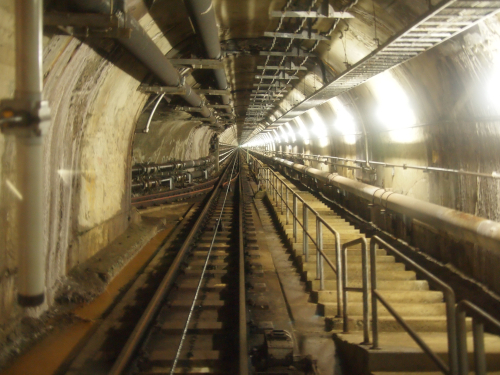
Japan’s Seikan Tunnel is an older version of the Channel Tunnel in many ways. Opened in 1988, it is a 33.4-mile tunnel connecting Japan’s main island with Hokkaido Island, including a 14.4-mile undersea section beneath the Tsugaru Strait.
Engineers couldn’t use tunnel boring machines because of the unpredictability of the underwater rock and soil. Instead, they drilled and blasted through a volatile earthquake zone, embedding the tunnels in dense volcanic rock to provide stability. Digging employed 3,000 workers at a time, and 34 lives were lost due to accidents such as cave-ins and flooding.
The tunnel was planned after a typhoon in 1954 sank a ferry boat, killing 1,400 people making the trip to Hokkaido. When the tunnel opened in 1988, three million passengers made the journey. Today, only around two million passengers a year use the tunnel due to the affordability and convenience of air travel, despite the tunnel accommodating Japan’s famous bullet trains.
Lincoln Tunnel (United States): urban engineering marvel
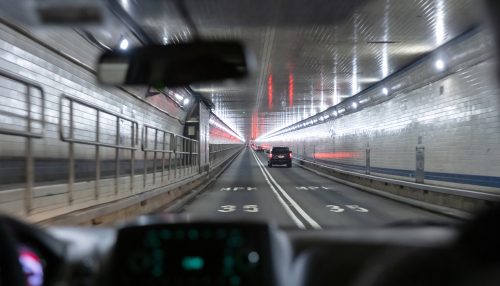
The Lincoln Tunnel is just a short 2.5-mile tunnel that passes under the Hudson River, making underground connections between New York’s Manhattan and Weehawken, New Jersey. But the tunnel is notable for its age—built between 1934 and 1957—and size, accommodating six lanes of vehicular traffic.
The tunnel was built using an innovative shield-and-compressed-air method. A cutting shield was made in advance of the tunnel using hydraulic jacks, with compressed air pumped into the shield to counteract the weight of the river. Workers constructed iron rings to bolster the shield and form the permanent lining of the tunnel.
These men had to pass physical exams to ensure they were up to the strenuous work in the claustrophobic conditions. Fifteen died during the construction, many due to decompression sickness (“the bends”) from the pressurized conditions. However, this was considered a remarkably low number of casualties at the time, considering how dangerous the work was.
Today, the Lincoln Tunnel is one of the busiest in the world, with around 120,000 vehicles using the tunnel every day.
Lærdal Tunnel (Norway): the world’s longest road tunnel
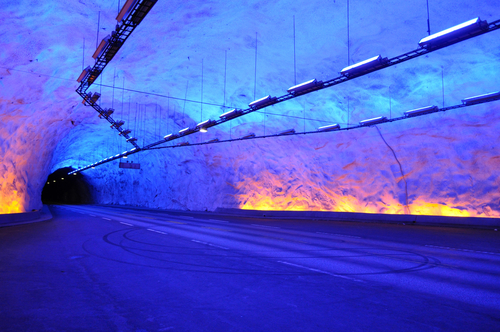
Norway is difficult to traverse by car due to fjords, glaciers, steep mountains, and heavy snows that can cause four-story-high snow drifts. This unique geography has meant that many regions were cut off during the winter due to snow and ice. The Lærdal Tunnel, running between Lærdal and Aurland, opened in the year 2000 as the final part of a broader highway project to connect Oslo and Bergen, even in the winter months.
Measuring over 15 miles, it is the longest road tunnel in the world, cutting through the features of the natural landscape and covered by artificial caves. While driving underground for 20 minutes can feel unnerving, it is in fact an extremely safe route. It is complete with emergency exits and a high-tech ventilation system, which also treats dust and nitrogen dioxide generated by passing cars.
Tokyo Bay Aqua-Line (Japan): where innovation meets ocean
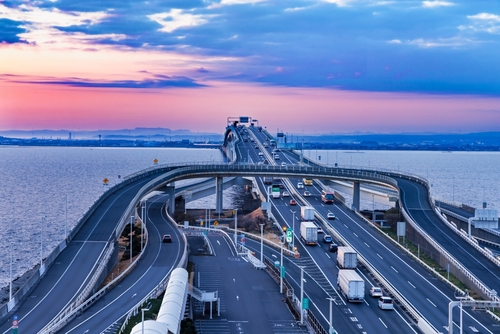
The Tokyo Bay Aqua-Line is a combined bridge and tunnel that connects Kawasaki with Kisarazu across the Tokyo Bay, making a 90-minute drive through the central areas of Tokyo just 15 minutes long. Opened in 1997, it has a total length of 14.7 miles, combining 2.7 miles of bridge and 6 miles of underwater tunnel.
Architects created an artificial island called Umi-Hotaru in the middle of the bay to connect the Kisarazu side bridge to the Kawasaki side tunnel. Another manmade island stands above the middle of the bridge, with a tower containing a ventilation system that is powered by the winds over Tokyo Bay.
The construction was a major investment, costing about $11.2 billion USD. Soft seabeds, high winds, and potential earthquakes meant that engineers had to innovate new construction methods. The project has driven population growth and tourism in Kisarazu.
Øresund Bridge-Tunnel (Denmark/Sweden): a cross-border engineering feat
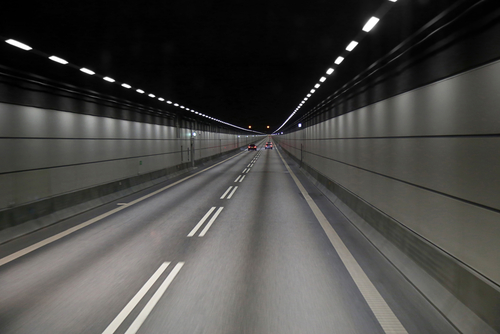
Serving as the setting for the popular Scandinavian TV series “The Bridge,” the Øresund Bridge-Tunnel connects Denmark and Sweden over the Øresund Strait. Opened in 2000, this is another bridge and tunnel combo with a combined length of almost 10 miles. A bridge section connects the Swedish coast to an artificial island called Peberholm, where it links to an underwater tunnel. A tunnel was chosen for the final stretch to avoid interfering with air traffic from Copenhagen Airport.
The full cost of the bridge and tunnel is estimated at around $2.3 billion USD, completely user-financed by tolls. It is expected that it will be paid off in 2037.
The future of tunnel engineering
Tunnel construction will continue to be a key part of urban development in the coming years. It allows us to move transportation infrastructure underground, freeing up space while minimizing habitat disruption and pollution. Tunnels also mean fewer bridges that can potentially disrupt increasing air traffic from both planes and drones.
Modern tunnel construction techniques are making bridge building safer. Advanced tunnel boring machines are equipped with sensors that allow them to read conditions and make smart adjustments to speed, torque, and thrust for better safety and performance.
Improved surveying technology provides a better understanding of geological conditions and risks during project planning. Improved robots and automation also mean fewer human workers in dangerous tunnel conditions.
Connecting our world, one tunnel at a time
These seven amazing tunnels from around the world showcase human ingenuity in creating a more connected world. They are also a taste of what the future will look like as both land and air real estate become increasingly valuable, so there is a significant benefit to moving key infrastructure underground.
On an individual level, these tunnels offer faster, often more environmentally friendly routes for exploring the world. Some are so spectacular that just driving through them is a major tourist experience. Whether they attract visitors from around the world or simply make local people’s daily commute easier, these tunnels represent some amazing feats of human ingenuity and engineering.
FAQ
How long does it take to build a major tunnel?
How long it takes to build a tunnel depends on the length of the tunnel and the complexity of the build. Today, you can probably expect a major tunnel of 10-20 miles to take about a decade, though that doesn’t include surveying, planning, and the political decision-making behind approving a major tunnel project.
What are the biggest challenges in tunnel construction?
The biggest challenges in tunnel building are managing unexpected geological conditions, such as where soft soil unexpectedly meets hard rock, and maintaining the integrity of the tunnel against collapse while it is under construction. Ensuring that long tunnels are properly ventilated and preventing fire and toxic gas exposure are also major issues.
How do engineers ensure tunnel safety during earthquakes?
Engineers use flexible lining designs that will bend rather than break if the surrounding ground moves. Steel fibres are woven into concrete to add extra strength, and the walls of tunnels are bolted to the surrounding rock, which reduces the risk of major movement.
What’s the difference between cut-and-cover and boring methods?
Cut and cover is when you dig a trench from the surface, build the tunnel structure within it, and then cover it up again. Boring uses a machine to tunnel horizontally through the ground at the level you want the tunnel, with minimal disruption to surface layers. This is by far the more common method today, especially as the technology improves.
How do tunnels impact local economies and communities?
Tunnels improve connectivity by reducing travel times between destinations for both people and goods, which can boost trade activity, cultural exchange, and economic growth. They can also offer a way to traverse otherwise harsh conditions, reducing isolation for people living in challenging environments. They can have a positive environmental impact by reducing the number of cars on the road, and tunnel building creates jobs.